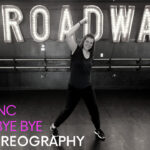Lee Brice’s chart-topping hit, “I Don’t Dance,” is more than just a catchy tune; it’s a heartfelt anthem that resonates with anyone who’s ever been moved by love. While it garnered significant recognition, including a Single of the Year nomination at the 50th ACM Awards, the song’s origins were surprisingly simple, starting with a humble note on Brice’s phone. Let’s delve into the story behind “I Don’t Dance” and uncover the magic that made it a beloved country classic.
The journey of “I Don’t Dance” began with a simple title. Lee Brice, in his songwriting process, makes it a habit to jot down any sparks of inspiration, even if they seem insignificant at first. As he explained, “If I get ideas, a title, anything—even if it’s not good—I just write it down. So I can just scroll back through, and maybe those ideas pop back out at me.” Among these fleeting thoughts was the phrase “I don’t dance,” a phrase that would eventually blossom into a hit song.
The title lay dormant until a songwriting session with Rob Hatch and Dallas Davidson. During their collaboration, a casual mention of “dance” sparked a memory for Brice. “He [Davidson] had said something about ‘dance’ just in passing. And that title popped out, and we just started [writing] it.” This simple phrase became the foundation for a song that would touch hearts worldwide.
The core concept of “I Don’t Dance” is universally relatable: a man admitting his lack of dancing skills but expressing his willingness to step onto the dance floor for the woman he loves. As Brice sings, “I don’t dance, but here I am, spinning you round and round in circles.” This sincerity and simplicity are what make the song so impactful. “It’s really simple,” Brice noted, “but it’s so true and to the point.”
Initially, “I Don’t Dance” held a deeply personal meaning for Brice. He envisioned it as “a song for Sarah, before we got married,” referring to his then-fiancée Sarah Reevely. “It was kind of about our first dance.” This personal touch added an emotional layer to the song, grounding it in genuine experience.
However, during that pivotal songwriting session, something extraordinary happened. As Brice described, “magic” transformed “I Don’t Dance” from a personal wedding song into an anthem with broader appeal. “Immediately when we finished writing it, I realized it wasn’t just a song I was writing for my wife,” Brice shared. Perhaps it was the raw emotion stemming from his own relationship, but the song evolved into something “so special,” capable of resonating with anyone who has ever felt that compelling pull of love.
The authenticity of “I Don’t Dance” is undeniable. Brice himself emphasizes its personal nature, calling it “very honest and very real.” This genuineness extends to the recording process itself. Remarkably, the work tape from that initial songwriting session, capturing the raw guitar and vocal performance, was used in the final released version. “I just added stuff around it,” Brice explained. “That was it, that was the original live guitar and vocal work tape that’s [on the single]. It just had a magic to it.” This decision to retain the original work tape further enhances the song’s intimate and heartfelt feel.
Since its creation, “I Don’t Dance” has surpassed all expectations. It not only became the title track of Brice’s 2014 album but also soared to No. 1 on the country singles charts. Furthermore, it earned a prestigious nomination at the Academy of Country Music Awards, solidifying its place as a significant song in country music. This widespread acclaim underscores the song’s ability to connect with listeners on a profound level.
Beyond its commercial success, “I Don’t Dance” played a crucial role in shaping the direction of Brice’s entire album. While he had a collection of songs prepared, “I Don’t Dance” emerged as the defining piece. Written in just two days, Brice recognized its significance immediately. “I knew that day…I called [Hatch and Davidson], I said, ‘Guys, I think this is the title track to my record, this is the basis of what this next record is going to be.'” The song encapsulated the emotional core of the album, providing a thematic anchor for the entire project. “I didn’t know exactly what the whole feeling [on the album] was going to be until I wrote ‘I Don’t Dance.’ I felt like it said, ‘This is who I am right now for this album space.'”
In conclusion, the story of “I Don’t Dance” by Lee Brice is a testament to the power of simple ideas and authentic emotion in songwriting. From a fleeting thought jotted down on a phone to a chart-topping hit and album centerpiece, the song’s journey is as captivating as the tune itself. Its enduring appeal lies in its honest portrayal of love and the willingness to go the extra mile for someone special, even if it means stepping outside your comfort zone – or onto the dance floor, even if you “don’t dance.”


